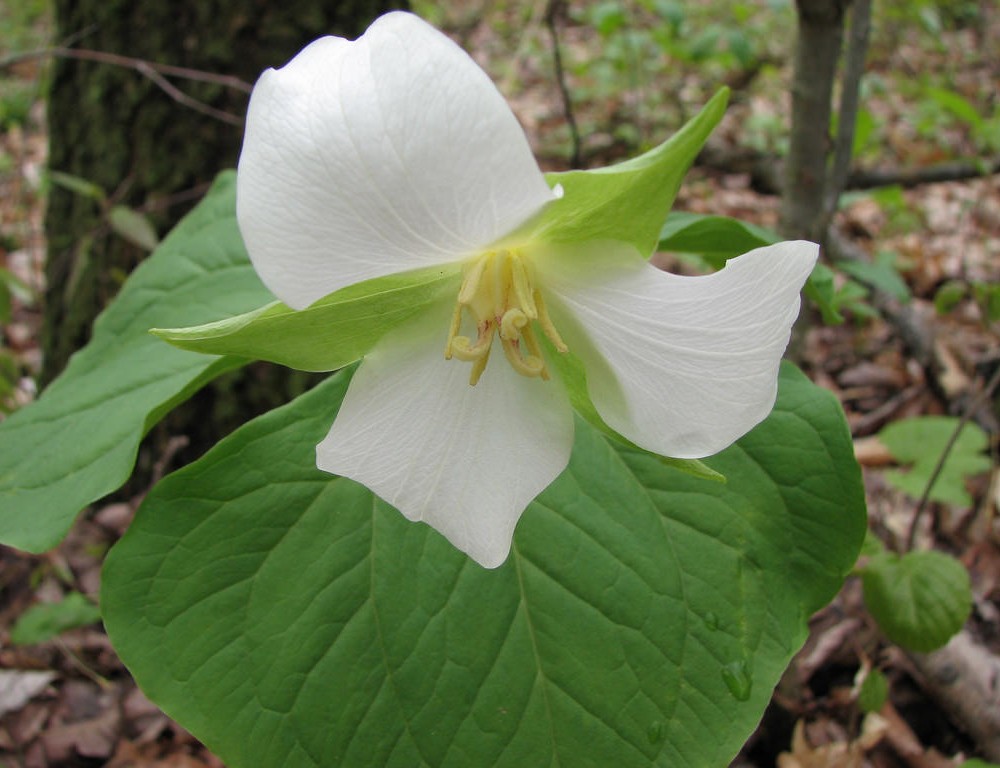Nodding wakerobin
(Trillium flexipes)

Description
Trillium flexipes, known as the nodding wakerobin, bent trillium, or drooping trillium, is a species of flowering plant in the family Melanthiaceae. It is found from Minnesota to Ohio, south to Tennessee, with isolated (and sometimes rare) populations in New York, Pennsylvania, Alabama, and other states. It is an endangered species in Ontario and possibly extirpated in North Carolina. T. flexipes is a perennial herbaceous plant that spreads by means of underground rhizomes. In northern areas, the flower tends to hang below the leaves, while central and southern strains have a large erect flower. The flower petals are normally white but can be reddish or maroon. The fruit is rosy red to purplish and fragrant of ripe fruit. T. flexipes is known to hybridize with other Trillium species. In particular, hybrids between T. flexipes and T. erectum can occur. Indeed, the red-petaled forms of T. flexipes tend to occur in regions where the ranges of both species coincide. Hybridization is also suspected between T. flexipes and T. sulcatum. Trillium (trillium, wakerobin, toadshade, tri flower, birthroot, birthwort, and sometimes "wood lily") is a genus of about fifty flowering plant species in the family Melanthiaceae. Trillium species are native to temperate regions of North America and Asia, with the greatest diversity of species found in the southern Appalachian Mountains in the southeastern United States. Plants of this genus are perennial herbs growing from rhizomes. There are three large leaf-like bracts arranged in a whorl about a scape that rises directly from the rhizome. There are no true aboveground leaves but sometimes there are scale-like leaves on the underground rhizome. The bracts are photosynthetic and are sometimes called leaves. The inflorescence is a single flower with three green or reddish sepals and three petals in shades of red, purple, pink, white, yellow, or green. At the center of the flower there are six stamens and three stigmas borne on a very short style, if any. The fruit is fleshy and capsule-like or berrylike. The seeds have large, oily elaiosomes. Occasionally individuals have four-fold symmetry, with four bracts (leaves), four sepals, and four petals in the blossom. The tetramerous condition has been described for several species of Trillium including T. chloropetalum, T. erectum, T. grandiflorum, T. maculatum, T. sessile, and T. undulatum.
Taxonomic tree:







